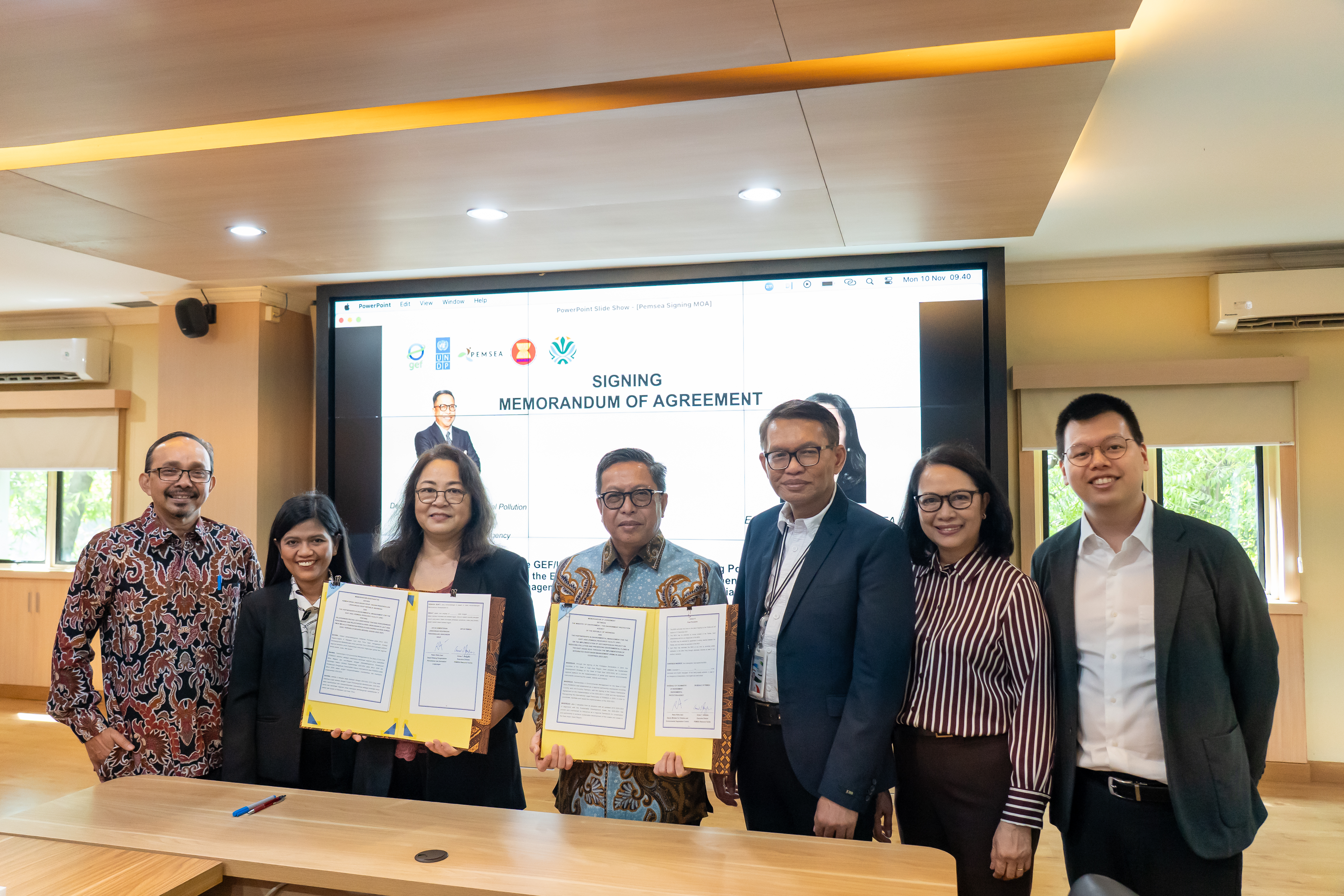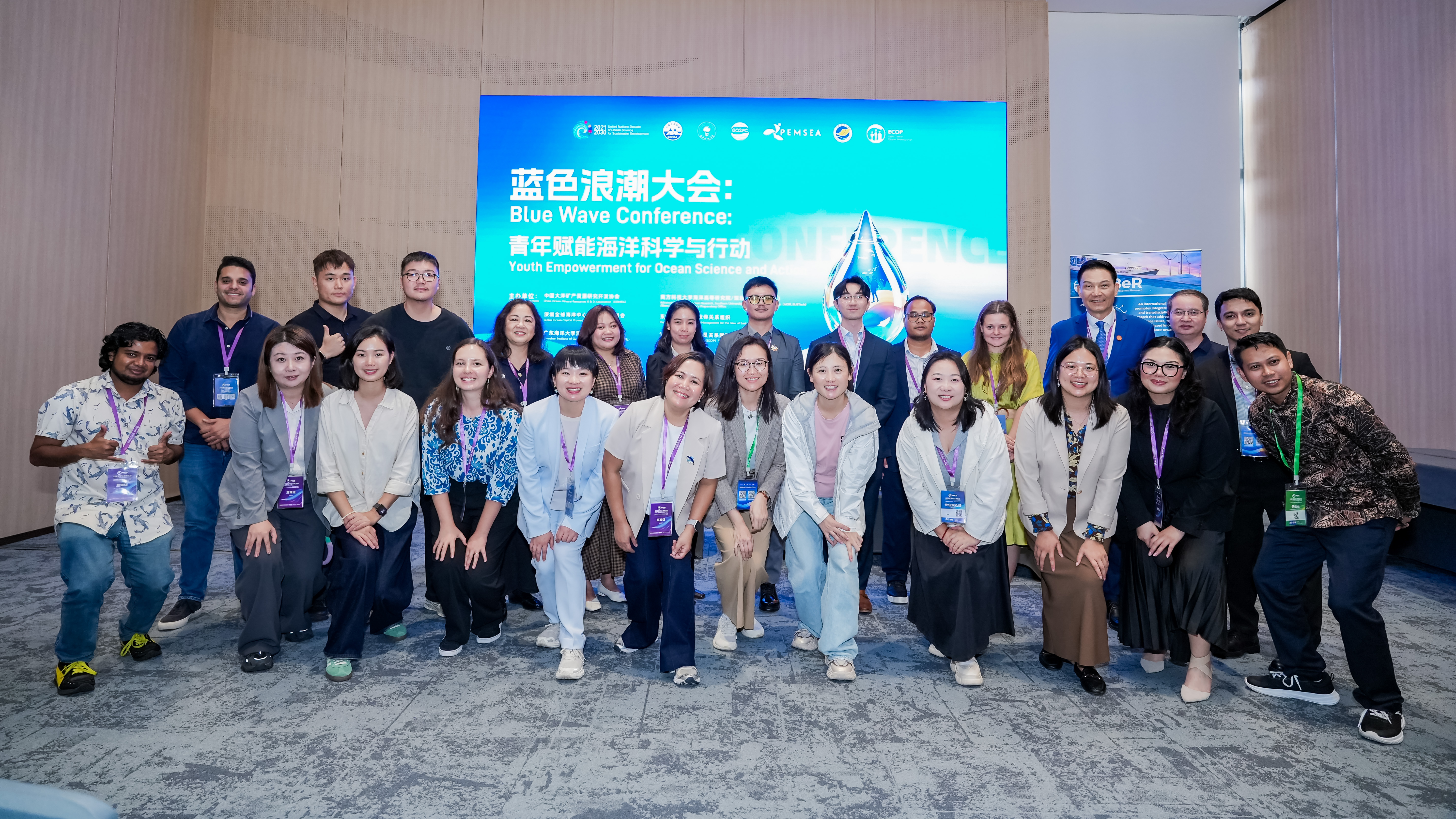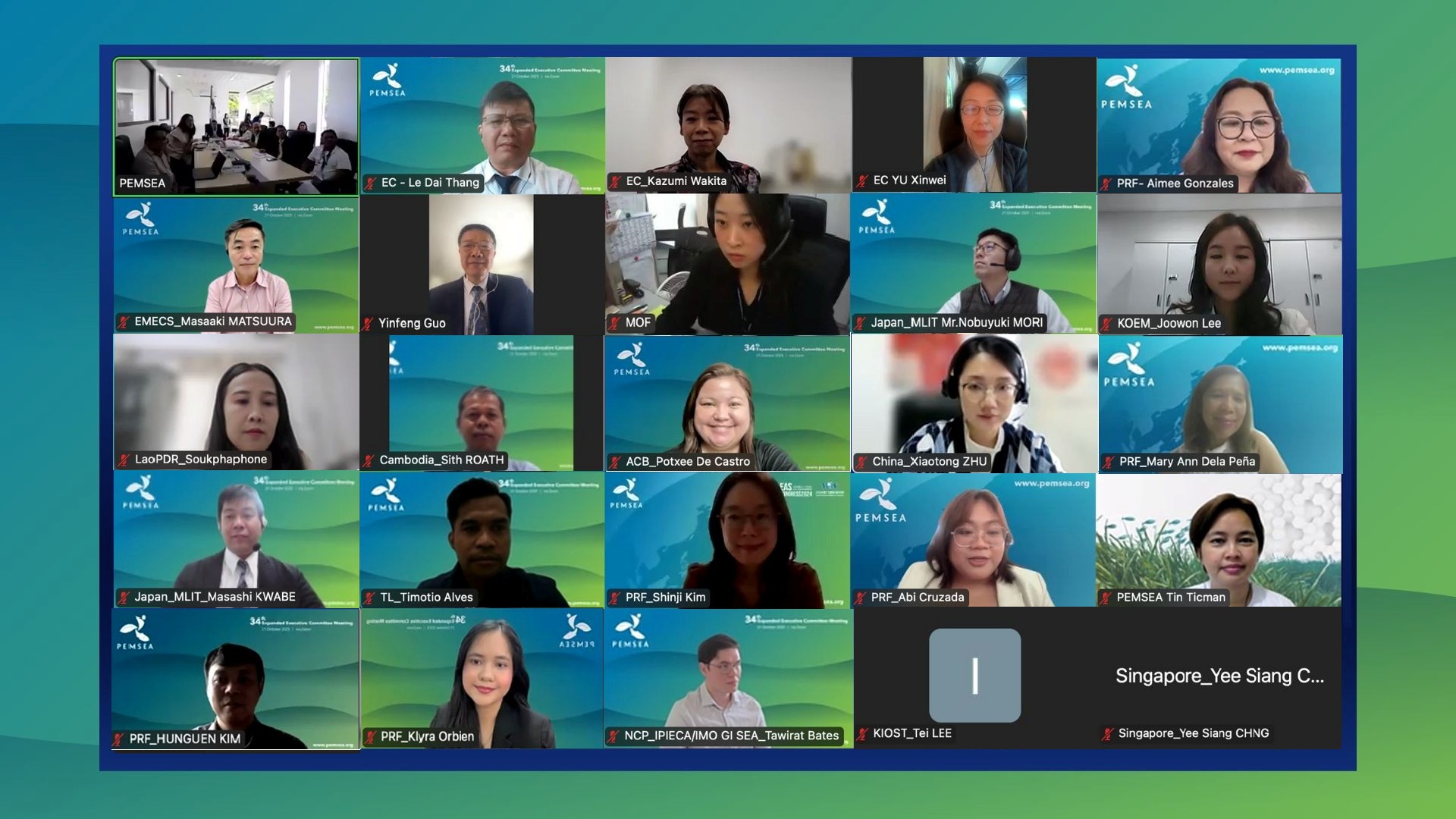The next steps to 2030: PEMSEA Maps the Future of Partnerships at 33rd Executive Committee Meeting in Busan
Wednesday, 30 April 2025
The 33rd Executive Committee (EC) Meeting of the Partnerships in Environmental Management for the Seas of East Asia (PEMSEA) concluded on 28 April 2025 with guidance on strategic programming, institutional strengthening and financial sustainability of PEMSEA.
Hosted by the Korea Institute of Ocean Science and Technology (KIOST) at its Yeongdo-gi facility in Busan, Republic of Korea, the EC meeting endorsed plans to extend PEMSEA's Sustainable Development Strategy for the Seas of East Asia (SDS-SEA) Implementation Plan to 2030, noted significant progress on the PEMSEA on its regional Blue Carbon Program, and finalized the timeline for upcoming Partnership Council elections.
Key Regional Leaders Convene in Busan
PEMSEA Executive Committee members, led by Chair Dr. Vann Monyneath paid a courtesy visit to Dr. Hyi-Seung Lee, President of KIOST ahead of the EC Meeting who discussed the initiatives of KIOST such as monitoring and forecast of climate change in Korean and ocean waters and mitigating coastal disasters through AI, big data and remote sensing, development of new marine resources, and innovative technology to harness energy from the ocean, among others.
The meeting brought together key EC members including Undersecretary Jonas Leones (Co-Chair), Dr. Keita Furukawa (Technical Session Chair), Ms. Chen Danhong (Intergovernmental Session Chair) who joined online, Dr. Suk-Jae Kwon (Technical Session Co-Chair), and Mr. Le Dai Thang (Intergovernmental Session Co-Chair).
PEMSEA Resource Facility (PRF) Executive Director Aimee T. Gonzales and Deputy Director for Planning and Partnerships Shinji Kim led the secretariat's participation, while Mr. Wang Antao from China's Ministry of Natural Resources, Ms. Zhu Xiaotong from China PEMSEA Center, Dr. Handoko Adi Susanto, the Interim Executive Director of ATSEA Program, and Ms. Eunjeong Seo, Director from the Ministry of Oceans and Fisheries of the Republic of Korea served as observers of the meeting.
The meeting was organized by the PRF Secretariat led by Ms. Abigail Cruzada with support from Ms. Francesca Cortez.
Aligning Regional Strategy with Global Frameworks
A central focus of the meeting was the proposal to extend the SDS-SEA Implementation Plan from its current 2027 endpoint to 2030, aligning PEMSEA's regional governance framework with key global commitments including the UN Decade of Ocean Science for Sustainable Development, the UN Decade of Ecosystem Restoration, and broader Sustainable Development Goals.
As 2030 draws nearer, strengthening PEMSEA's institutional and financial sustainability requires a review of the Implementation Plan and extension of the Strategy timeframe and will incorporate recent developments, including the 10 action points in the Xiamen Declaration and key recommendations from the EAS Congress 2024.
The review and extension process will employ a Balanced Scorecard (BSC) methodology covering four core perspectives: Internal Processes for assessing efficiency and effectiveness of operations; Customer/Stakeholder for understanding needs of beneficiaries and donors; Financial for identifying measures for sustainable funding streams; and Learning and Growth for addressing organizational capacity needs.
The updated plan will synthesize PEMSEA's value proposition at regional, subregional, and national levels of ocean governance. A comprehensive organizational capacity assessment will also be conducted to ensure PEMSEA's institutional resilience beyond 2027.
The draft extended Implementation Plan will undergo review at the 17th EAS Partnership Council Meeting in July 2025, with final adoption targeted for the 34th Executive Committee Meeting in October.
Blue Carbon Program Advances with Regional Protocol
Significant progress was reported on PEMSEA's Blue Carbon Program, which aims to establish a regional certification system for blue carbon credits through a voluntary offset mechanism. Since its endorsement by the Partnership Council in 2023, the program has completed several studies analyzing blue carbon supply and demand across the East Asian Seas region.
The East Asian Seas region hosts some of the world's largest blue carbon ecosystems, offering tremendous potential for meeting national climate commitments while building coastal resilience.
The regional accounting methodology being developed will provide a standardized approach that complements rather than replaces the mandatory accounting required for Nationally Determined Contributions.
A 22-member Technical Working Group (TWG) was established in early 2025, with representatives from PEMSEA Country and Non-Country Partners and the PEMSEA Network of Learning Centers.
The TWG held its first meeting in February 2025 and provided recommendations to expand the program's scope beyond carbon credit certification to include valuation of socioeconomic and ecosystem services; ensure alignment with biodiversity and climate change targets in the SDS-SEA; establish baseline data on blue carbon ecosystems to prioritize rehabilitation efforts; create a regional monitoring network for consistent carbon parameter data collection; develop alternative market instruments like nature credits alongside carbon credits; and implement targeted capacity-building for various stakeholder groups.
For 2025, the Blue Carbon Program workplan includes finalizing the Regional Blue Carbon Accounting Protocol by June, securing funding for pilot testing, identifying implementation sites, and developing a business plan for certification.
Partnership Council Elections Process Approved
The Executive Committee approved the timeline for electing new officers to the EAS Partnership Council for the 2025-2028 term. Three positions will be vacated on July 31, 2025: EAS PC Co-Chair, Technical Session Co-Chair, and Intergovernmental Co-Chair.
Nominations will open on 1 April, with successful candidates to be formally elected during the 17th EAS Partnership Council Meeting in mid-July 2025. Elected officers will serve in personal capacity for a three-year term from 25 July 2025 to 24 July 2028.
Current co-chairs were requested to formally confirm their willingness to continue in their roles by 31 July 2025.
Building on Three Decades of Regional Cooperation
The EC also discussed the PRF's updates, which highlighted secured financial and operational funding for 2024-2025, status of implementing the SDS-SEA IP 2023-2027, and updates on ongoing PEMSEA projects.
Moving ahead, the Executive Committee discussed plans to review models of financial sustainability and develop a comprehensive PEMSEA business plan once the SDS-SEA review and organizational capacity assessment are completed in the third quarter of 2025.
The EC also reviewed the outcomes of the East Asian Seas Congress 2024, which delivered innovative, shared solutions for ocean sustainability, and strengthened partnerships to advance SDS-SEA goals through joint commitments and enhanced cross-border collaboration.
In 2021, the Preah Sihanouk Ministerial Declaration adopted the framework for the PEMSEA Roadmap to 2030, while the more recent Xiamen Ministerial Declaration in 2024 introduced ten synergistic actions across governance, ocean health, blue economy, and food security domains.
The meeting builds on PEMSEA's three-decade legacy of tackling coastal and ocean challenges in the East Asian Seas region. Since its inception, it has continuously adapted to global developments and regional needs while ensuring alignment with national and local priorities.



